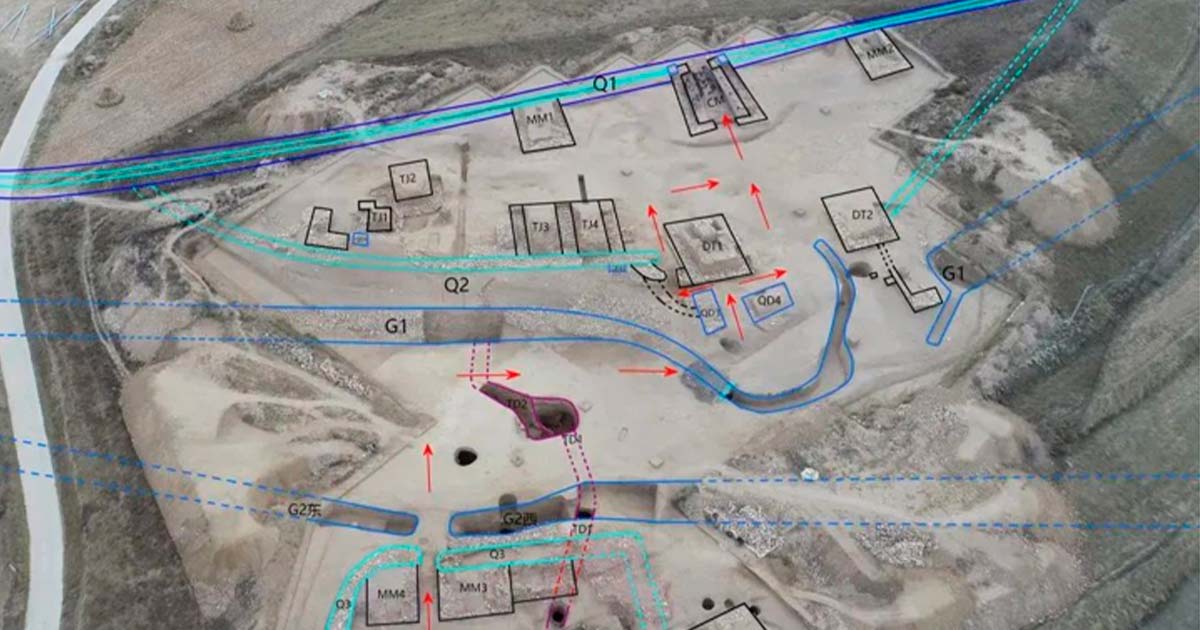Experts Blown Away by Ancient Tactical Defense Tunnels Unearthed in China
Entering the ancient stone city of Houchengzui over 4,000 years ago was a tryst, with an elaborate fortification system, layers and layers of defensive walls and the overpowering of the armed settlers. But that was not all. What had eluded archaeologists until now were a series of secret underground passageways and tunnels – 6 intersecting each other in total, functioning as a hidden transportation network!
Tunnels Throughout the Fortification
The archaeologists reported that the recently discovered tunnels varied in depth, ranging from approximately 5 feet (1.52 m) to about 20 feet (6.06 m) below the surface. Internally, these tunnels measured between 3 feet (0.91 m) and 6 feet (1.82 m) in height, with an approximate width of 4 feet (1.21 m).
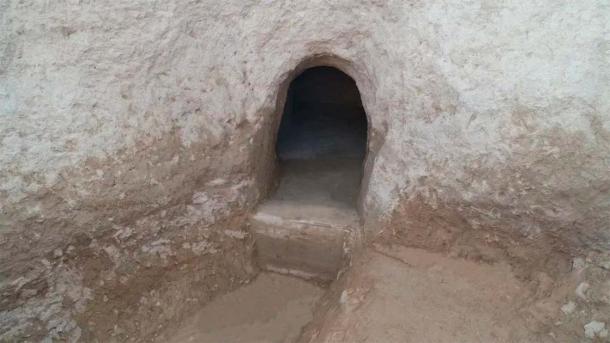
Entrance to underground tunnels. (Chinese Academy of Social Sciences / China Archaeology Network)
Some of these tunnels even extended beneath the defensive walls of the city, providing passageways that opened to the external surroundings, according to a press release by the Inner Mongolia Autonomous Region Institute of Cultural Relics and Archaeology via the Institute of Archaeology at the Chinese Academy of Social Sciences (CASS) and the China Archaeology Network.
- Ten Amazing Subterranean Structures From the Ancient World
- Discoveries of Ancient Underground Cities Around the World
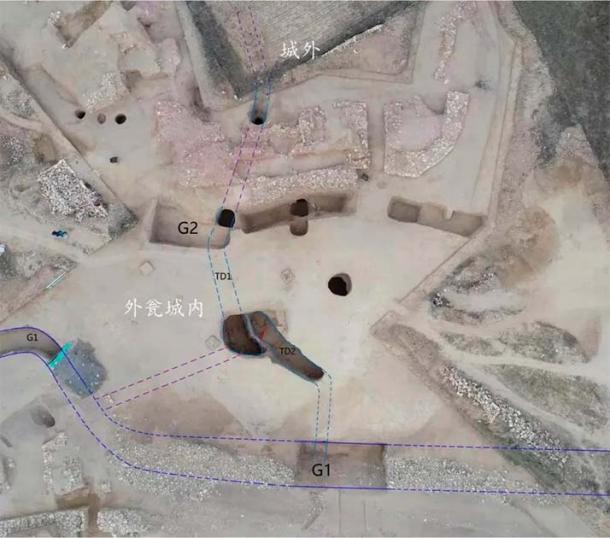
TD1 and TD2 tunnels are illustrated on the map with blue dotted lines. (Chinese Academy of Social Sciences / China Archaeology Network)
The secret tunnels at Houchengzui Stone City mean an additional layer of security to complement the existing defenses of the city. This Neolithic city was already equipped with a sophisticated defensive system, featuring three concentric walls, supplemental structures along these walls, a limited number of well-guarded gates, and strategically positioned trenches.
Archaeologists theorize that the design of Houchengzui Stone City is rooted in its cultural significance for military defense and its strategic location at the periphery of an ancient alliance.
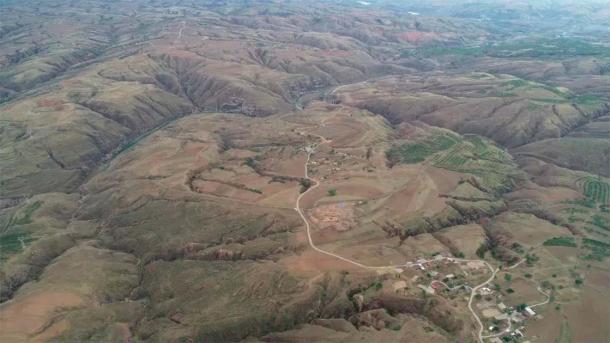
A panoramic view of Houchengzui Stone Town. (Chinese Academy of Social Sciences / China Archaeology Network)
On the discovery of two other sites from the same period, with similar cultures, Chen Xingcan, director of the Chinese Academy of Social Sciences' Institute of Archaeology, told China Daily back in 2022, "The Houchengzui, Bicun, and Shimao sites composed a cultural system that is crucial for the study of how a complicated society was formed in the first place.”
"Many questions remain unanswered. If these sites were military fortifications, who did they defend against?" Chen concluded. "The work has just started, and there's a long way to go to more clearly [and] figure out their connections."
All in all, the archaeologists at that time deduced that the study of these three crucial stone cities in the region will offer a fresher insight of civilization along the river.
- Shui-mu Niang-niang: The Old Mother of the Waters Who Submerged an Ancient City
- The ancient underwater Lion City of China
Houchengzui Stone City: Strategic Urban Planning and Burials
Houchengzui, also referred to as Houchengzui Stone City, stands as an archaeological site located on the northern bank of the Hun River within Qingshuihe County, situated in the Mongolia Autonomous Region. Based on prior excavations, the city's origins have been traced back to approximately 4,300 to 4,500 years ago, aligning with the Longshan period, reports The Heritage Daily. Archaeologists first discovered the city of Houchengzui in 2005 and commenced systematic excavations in 2019.
This historical epoch witnessed the emergence of late Neolithic societies, including the Black Pottery or Longshan culture. Spanning an expansive area of about 341 acres in an oval configuration, Houchengzui comprises both an inner and outer city. The city is further fortified by a robust triple defensive system.
Excavations at Houchengzui have unveiled three distinct city gates: the Main City Gate (CM1) takes a central position within the outer city and is characterized by a rectangular shape, hinting at careful and deliberate urban planning and strategic architectural planning. The Urn City Gate (CM2) and the Outer Urn City Gate (CM3) add further complexity to the city's entrance points.
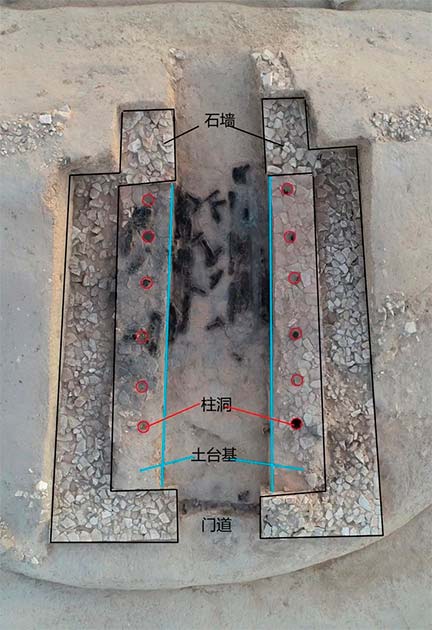
Close view of main city gate. (Chinese Academy of Social Sciences / China Archaeology Network)
As of the current findings, large-scale tombs have not been identified within the archaeological site of Houchengzui. However, a small cemetery has been discovered on the southwest side of the city, comprising eight rectangular vertical cave earth pit stone tombs.
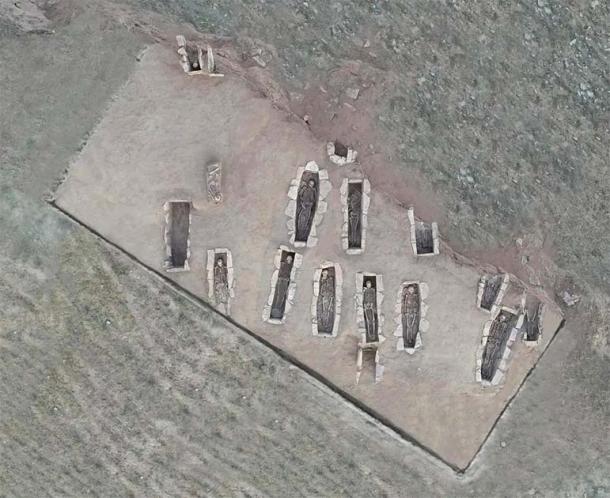
Panorama of the tomb excavation. (Chinese Academy of Social Sciences / China Archaeology Network)
These tombs share common characteristics, all oriented towards the southeast, with dimensions ranging from 175 to 200 cm (68.89 to 78.74 in) in length, 40 to 60 cm (15.74 to 23.62 in) in width, and approximately 30 to 50 cm (11.81 in) in depth. The tombs feature a flat slate base, while the four walls are constructed using slings, contributing to the distinct architectural style of these burial structures.
Top image: A network of ancient tunnels was unearthed at Houchengzui Stone City gate, China. Source: Chinese Academy of Social Sciences / China Archaeology Network
By Sahir Pandey
References
Kaihao, W. 2023. Houchengzui stone ruins offer glimpse into prehistoric civilizations. Available at: https://www.chinadaily.com.cn/a/202209/19/WS6327acbaa310fd2b29e784e5_2.html.
Milligan, M. 2023. Archaeologists find network of ancient tunnels at Houchengzui. Available at: https://www.heritagedaily.com/2023/12/archaeologists-find-network-of-ancient-tunnels-at-houchengzui/150075.
Plufgheot, A. 2023. Secret underground passageways discovered in ruins of 4,300-year-old city in China. Available at: https://ca.news.yahoo.com/secret-underground-passageways-discovered-ruins-193014724.html.
Smythe, K. 2023. Ancient Tunnels Finally Revealed To The World. What Do They Mean? Available at: https://dailycaller.com/2023/12/29/ancient-tunnel-stone-city-china-houchengzui-apocalypse/.
















